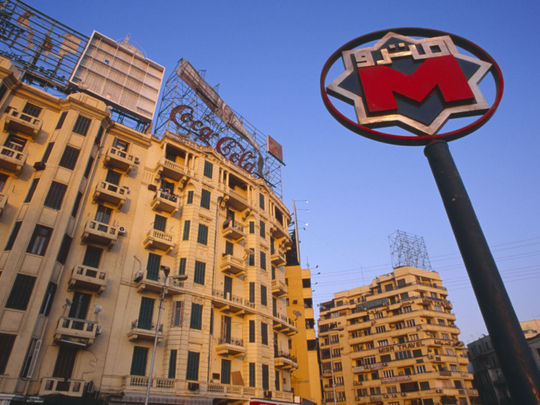
Cairo: For more than a year now, Medhat Serour, an attendant at a Cairo restaurant, has been facing an ordeal every day while using the city’s subway thanks to shutdown of a station.
Since August 2013, Egyptian authorities have shut the subway station in Cairo’s iconic Tahrir Square, citing security reasons.
The shutdown has deprived commuters using this main station, named after late Egyptian president Anwar Al Sadat, to switch between the subway’s two lines. Like millions of passengers using the subway, Serour has since been obliged to use the Al Shouhda [Martyrs] station, the only facility available for making the switch.
“Since Al Sadat [station] was closed, my daily journeys to and from my work have become like hell,” said Serour. “For almost all hours of the day, the Martyrs Station is full of people jostling to board trains or switching from one metro line to the other,” added the 52-year-older who works in the quarter of Dokki on the western bank of Cairo Nile.
“This chaos subjects the riders, mainly women, to sexual harassment, thefts and injuries caused by the stampede. It is unfair for the government to allow this tragedy to continue to happen.”
In August 2013, Egyptian security forces dispersed two camps held in Cairo by backers of the deposed Islamist president Mohammad Mursi, leaving hundreds dead.
The crackdown sparked violent unrest across Egypt by Mursi’s supporters, forcing authorities to take security measures, including the closure of the Sadat metro station in central Cairo.
The station lies beneath Tahrir Square, the epicentre of the 2011 uprising that eventually forced long-time president Hosni Mubarak to step down.
Repeated promises by the government to reopen the station have not been kept. Transport officials have blamed security agencies for the standoff.
“The decision to reopen the station lies in the hands of security,” Ali Fadali, the chairman of the government-run metro authority, has said on several occasions. “We are ready to operate it at any time.”
He estimated his agency has incurred losses of around 216 million Egyptian pounds (around Dh108 million) due to shutdown of the station.
Over the past 17 months, Tahrir Square has been occasionally closed to car and pedestrian traffic to prevent followers of Mursi’s Muslim Brotherhood from staging a sit-in there.
Subway trains and platforms have recently experienced bomb blasts, which the government blamed on Mursi’s loyalists.
Members of the public backed by human rights groups have filed several lawsuits, requesting a ruling to oblige President Abdul Fattah Al Sissi to order re-operation of the Sadat station.
Earlier this week, a panel of judges, recommended the reopening of the station, refusing the official argument that the shutdown is aimed at protecting national security.
The panel, whose recommendation is not binding, called on the Administrative Court that is hearing a relevant lawsuit, to order the government to reoperate the station and properly secure it.
“The continuation of closing the station for national security considerations is not justifiable in terms of law and in view of the improved security situation in the country,” local media quoted the panel as saying in its report. No date has been set yet for a final verdict on the case.
“We respect all court rulings. In case there is a court order for reopening the station, we will refer it to the security agencies,” subway spokesman Ali Abdul Hadi said. “The decision on this rests with the security agencies, not the Metro Operation Authority.”
Around 3.5 million people use the Cairo subway on a daily basis, according to official figures. The service links the outskirts of this sprawling city of some 17 million people to its centre.












